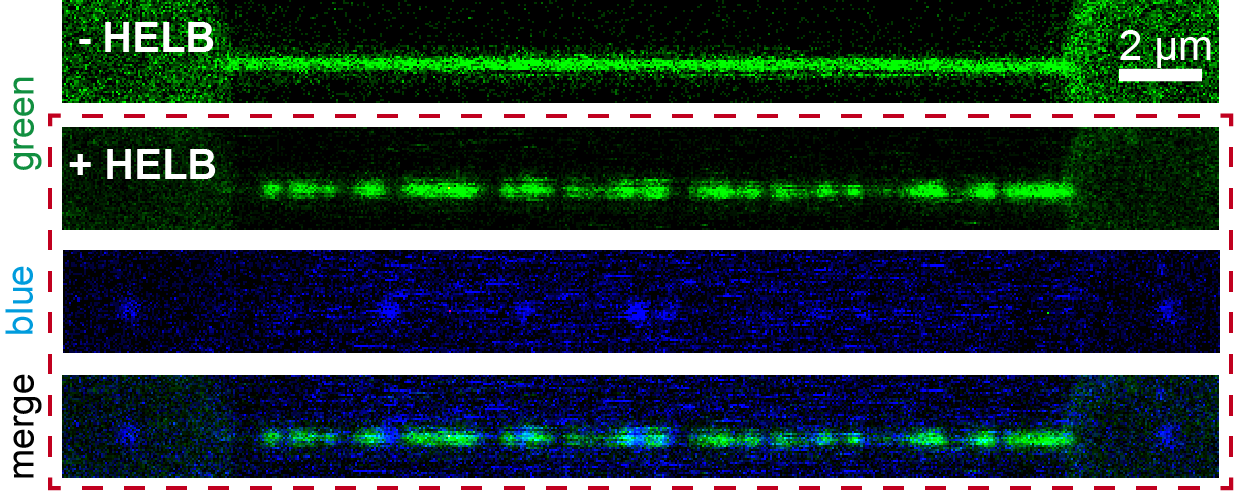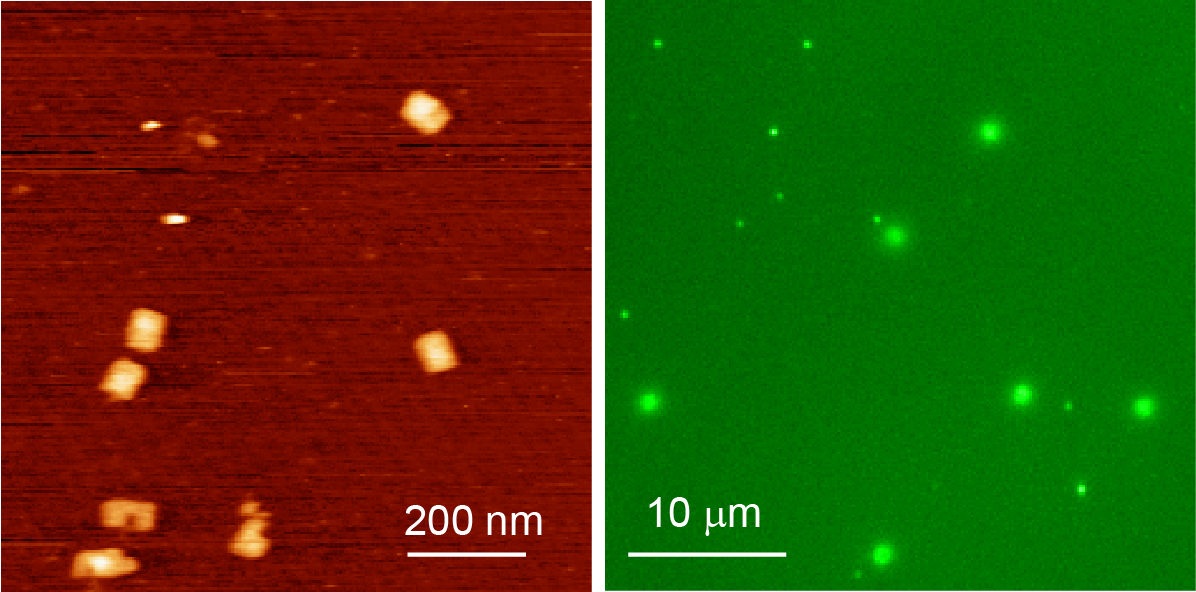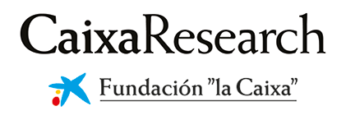Molecular Biophysics of DNA Repair Nanomachines
RESEARCH GROUPS

Fernando Moreno-Herrero
Group Leader
Research Summary
We are interested in studying double strand DNA break repair, Chromosome organization, and replication at the single molecule level using Atomic Force Microscopy, Magnetic and Optical Tweezers combined with fluorescence, and standard biochemical methods.
Single-molecule manipulation and imaging techniques offer huge potential to investigate reactions that involve nucleic acids and proteins in completely new ways, providing information that is inaccessible to conventional ensemble experiments. Using single molecule techniques, it is possible to directly observe protein:DNA intermediates, potentially in real time, and to study individual enzymatic cycles in an unsynchronized population.
Research Lines
Our current Research lines are:
- Single Molecule studies of DNA repair mechanisms
Genome integrity and maintenance are essential for the viability of all organisms. A wide variety of DNA damage types have been described, but double-strand breaks (DSBs) stand out as one of the most toxic DNA lesions. Two major pathways account for the repair of DSBs: homologous recombination (HR) and non-homologous end joining (NHEJ). Both pathways involve complex DNA transactions catalyzed by proteins that sequentially or cooperatively work to repair the damage. In our group, we use single-molecule methods to visualize these complex transactions and characterize the protein:DNA intermediates of DNA repair, ultimately allowing a comprehensive breakdown of the mechanisms underlying each pathway.

- The structure and role of long non-coding RNAs in DNA-protein interactions
Long noncoding RNAs (lncRNA) are emerging as key players in cancer as parts of poorly understood molecular mechanisms. Using our single molecule methods, based on AFM, magnetic and optical tweezers, we aim to determine the structure of these RNAs and to understand their mechanism of functioning in different processes such as DNA repair and replication.
- Instrument development in high-resolution AFM and fluorescence microscopy
Our group is also interested in developing our own instrumentation in AFM and magnetic tweezers and related techniques. We are currently working on combining high resolution AFM imaging of nucleic acids with fluorescence microscopy to correlate DNA/RNA structure with the presence of a particular protein or complex component using TIRF microscopy.

Publications
Group Members

Group Leader
Fernando Moreno-Herrero
Lab assistant
María Teresa Arranz
Staff scientists
Carolina Carrasco Pulido
Clara Aicart Ramos
Silvia Hormeño Torres
Francisco de Asis Balaguer Pérez
PhD candidates
Sara de Bragança Vieira
Eva M. Martín Cuevas
Javier Mendia García
News
Descubren un innovador mecanismo de represión génica en bacterias vinculado a la multirresistencia frente antibióticos
23 de enero 2025 La regulación génica a “larga distancia” en bacterias es poco frecuente y si se produce, implica la formación de lazos en el ADN que acercan secuencias lejanas entre sí Un equipo internacional con participación del CSIC ha identificado en bacterias un...
La excelencia científica del Centro Nacional de Biotecnología se consolida con tres nuevos proyectos de innovación tecnológica
8 de enero 2025 Las iniciativas han recibido una dotación total de más de 3 millones de euros en el marco de la convocatoria de ayudas 2024 a proyectos de I+D de la Comunidad de Madrid. Dos de estas iniciativas están coordinadas por el Centro Nacional de Biotecnología...






